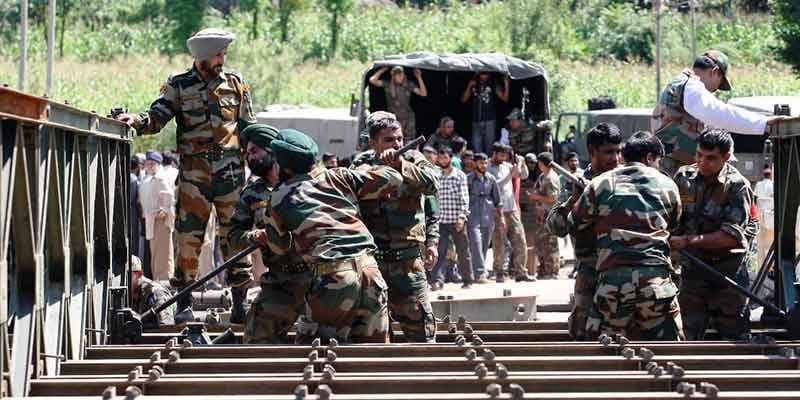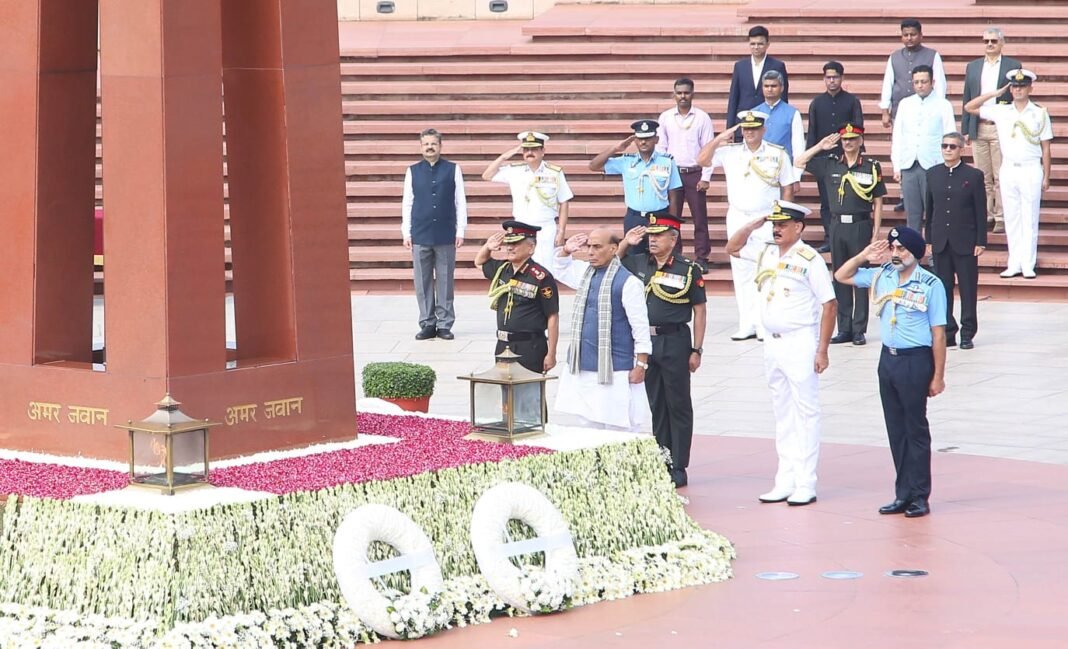By Major General RPS Bhadauria (Retd)
The Kargil conflict fought on the icy and rocky Himalayan mountains 26 years ago, will go down in the history as a war won by the young and brave soldiers of the Indian Army, led from the front by the young officers. The conflict saw numerous acts of bravery from the infantry and artillery soldiers, which is well documented.
However, there was equally important behind the scenes contribution from the Engineers, who made a stellar contribution in supporting the infantry and artillery soldiers. Their courage and role in the conflict has largely remained unheralded.
During a conflict, the biggest challenge is to keep the logistics chain open and uninterrupted, despite the fact that supply lines are the first target of enemy shelling in any conflict and Kargil was no different. The Engineers worked tirelessly to keep vital supply routes open, often under enemy fire, ensuring troops had the necessary ammunition, food, and equipment. They were responsible for building and repairing roads, bridges, and other infrastructure necessary for troop movement and logistics.
Engineers conducted reconnaissance missions to identify enemy positions and, when necessary, used explosives to clear obstacles or create breaches in enemy lines. Clearing minefields was a dangerous but crucial task performed by Engineers, allowing troops to advance safely.
Before the Pakistani intrusion, only one Indian brigade looked after an approximately 80-km sector. For Kargil operations, a division, along with several Arty and other units were inducted, a nightmare for logistic build-up, especially infrastructure development in the high-altitude mountainous terrain of Kargil and Batalik sectors.
Complete engineer support to the Indian Army during the Kargil War was provided by the Bombay Sappers. Six regiments along with detachments of 411 (Independent) Parachute Field Company took part in this operation. 106 Engineer Regiment was at Mashkoh and Batalik, while detachments of 411 (Independent) Parachute Field Company with Para Commando units were at Mashkoh and Point 4905. 110 & 116 Engineer Regiments were at Dras, 108 Engineer Regiment was at Kargil and Batalik while 112 and 270 Engineer Regiments were in Batalik. 2 Engineer, a Madras Sapper Regiment, was in 3 Mountain Divisional Sector at Turtuk.
Engineer tasks were spread across the 80 km of intrusion areas. They needed heavy engineer regiment deployments. The initial engineer support to the 8 Mountain Divisional Sector during the Kargil War was provided by the 6 Bombay Sapper Regiment along with detachments of 411 (Independent) Parachute Field Company.
During the Kargil War, several Sappers displayed exceptional bravery and skill, playing a crucial role in overcoming enemy positions and obstacles. Sapper Haji Basha of the Bombay Sappers was awarded the Sena Medal (Posthumous) for his bravery in demining and defusing IEDs, which helped pave the way for capturing an enemy position in Drass, despite sustaining severe injuries.
Captain Rupesh Pradhan of 2 Engineer Regiment was part of the team tasked to breach an enemy minefield to facilitate deployment of own troops in Muntho Dhalo, Batalik sub-sector. In the process, he suffered a mine blast injury to his face. For his courageous action, he was awarded Vir Chakra (VrC).
Their actions, along with those of other Sappers, were instrumental in the success of the operations, resulting in many of the Engineer Regiments winning a number of awards like the Battle Honour, Theatre Honour and the Chief of Army Staff (COAS) Unit citation.
The 108 Engineer Regiment commanded by Col Rohit Mohan Chaudhri, operated in the Drass sector under 08 Mountain Division. The unit was awarded a Battle Honour, Theatre Honour and the COAS Unit Citation for War. The 2 Engineer Regiment commanded by Col Krishnan, operated in the Drass sector and was awarded Theatre Honour.
The 106 Engineer Regiment helmed Col I P S Ahuja, operated in Drass and Kargil sectors under 16 Corps. The unit was awarded COAS Unit Citation of War. The 112 Engineer Regiment headed by Col N B Saxena, operating in Daha and Ganasak sector under 92 Mountain Brigade, was awarded COAS Unit Citation of War. These units, among others, were recognised for their unwavering dedication, engineering expertise, and bravery in overcoming challenging conditions and contributing to the overall victory in the Kargil War.





